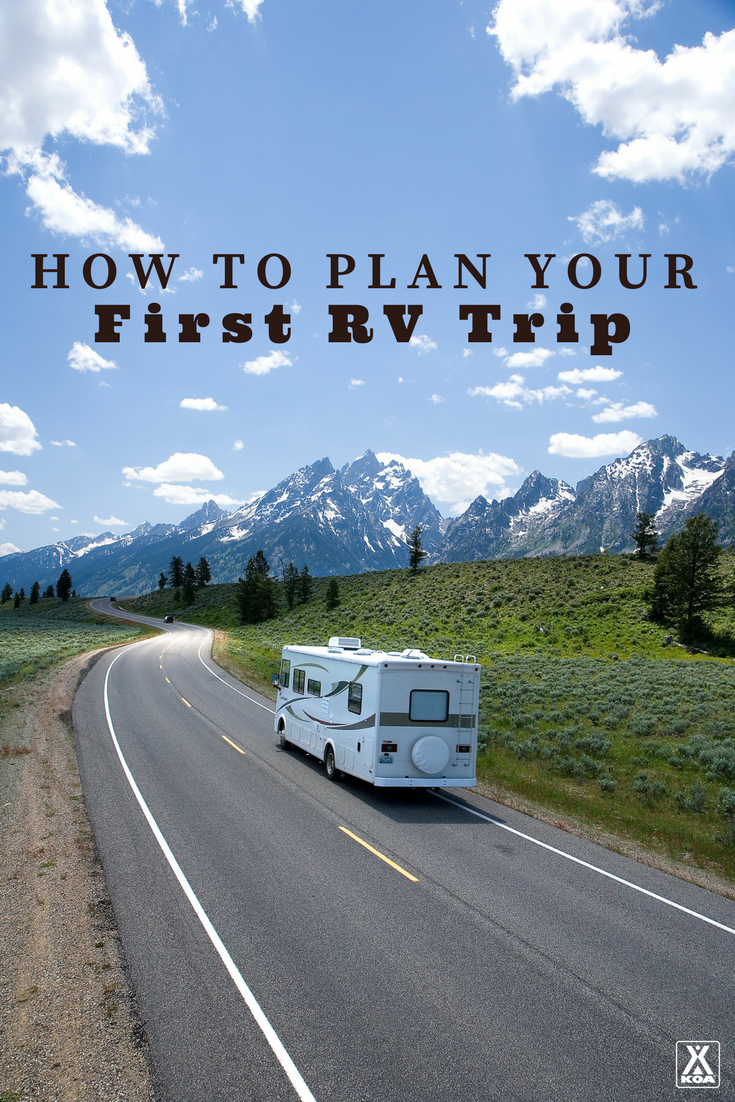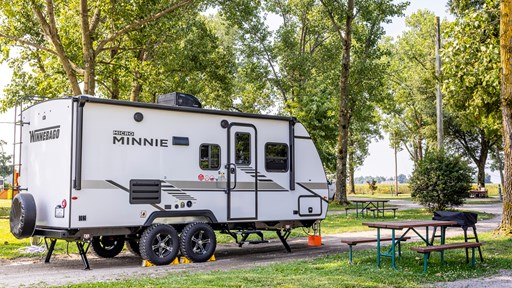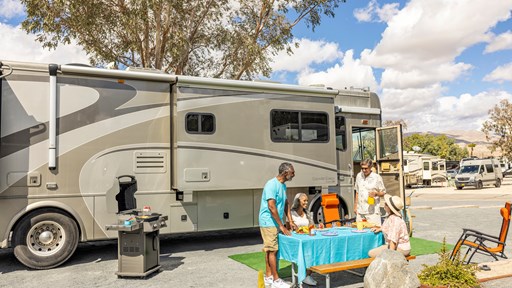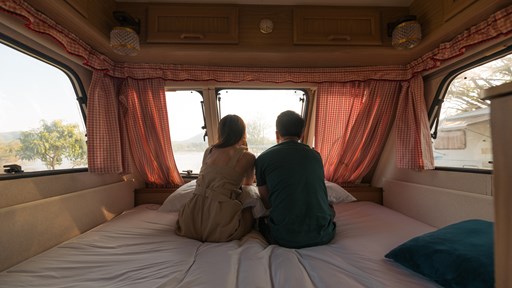A Beginners Guide to Planning the Ultimate RV Camping Trip
Wouldn’t it be great to wake up and be within striking distance from the day’s hike, paddle, or climb? And end your day sipping your favorite beverage by the campfire instead of making the long drive out of the backcountry to get home? If this sounds like a dream come true, an RV trip may be in your future.
In an RV, you can stay longer and take your home on the road. But it can seem like a big leap from car camping and backpacking to an RV road trip. With a little research, pre-trip planning, and the support of a growing RV community that’s eager to share their passion and experience with you, it’s easier than you think. Here are a few tips for planning that first trip.

Finding the Right Fit
With so many types and sizes of RVs on the market, an important first step is to find the one that fits your lifestyle and maximizes your fun. Each RV, from Class A to fifth wheel to camper van, offers different benefits and challenges, so you’ll want to check them out online, rent what feels like the best match, and know that you may change your mind after you’ve spent a few days on the road.
There are also a few logistics to consider before you rent, like how many people will be traveling together? How long do you want to be on the road? Where do you want to go? Start simple with a long weekend, including at least two overnights at different campgrounds so you get the feel of setting up and breaking down your campsite, and two nights in one spot so you can enjoy the benefits of staying longer in one destination. Fight the tendency to go big with long drives and distances, popular (and therefore crowded) destinations, and weeks on the road. Learning the operating systems and driving a bulky vehicle can leave you stressed and burned out if you overload your itinerary too soon.
Got a four-legged hiking companion? Consider a little more length (or a slide-out) to give you more room inside. Also, make sure your campgrounds are pet-friendly.
Think through your travel itinerary to pack the gear you’ll need to get outside. Are you hiking? Biking? Skiing? Climbing? Allow room for storing smaller gear, like a backpacks, trail shoes, harnesses, and helmets, and locate an outfitter to rent larger gear, like bikes and kayaks, when you arrive. Once you’re comfortable with RV travel, there are plenty of storage solutions to bring along your own boats, bikes, and other larger gear.

RV Rentals
Your rental options come down to one simple choice: drive it or tow it. For your first trip, a Class A, B, C, truck camper or camper van (all RVs that you drive instead of tow) are going to be the easiest to maneuver and to rent. If you have an SUV or truck with a hitch and have done some towing, you could consider renting and towing a travel trailer instead.
With this question answered, narrow down your search by checking local RV dealers that offer rentals and rental websites like Outdoorsy, and Cruise America.
A thorough walk-through and orientation should be included with any rental, as well as an operating manual for questions once you’re on the road. The orientation should cover electric, water, and sewer hook-ups, appliances, heat, AC, fuel, propane, and anything else you’re not familiar with.
Route Planning
RV travel is a lot slower than your average weekend road trip, so pick overnight stops that are no more than 300 miles—or about four hours—apart. Less time on the road gives you more time to live in your RV and enjoy your stops.
Find campsites that are easy in and out (preferably pull-through), offer amenities like food service and showers, and have knowledgeable staff to answer your questions. (The KOA app is a great resource on the road for campgrounds with reliable support for your first trip!)
Watch your gas gauge and scout out truck stops to fill up at about a quarter tank so you’ll have plenty of room for pulling through, turning, and backing your RV, without the stress of running on fumes.

Camp Set Up and Break Down
Your biggest challenge is most likely going to be setting up camp, and that’s why the orientation is so important. After parking and leveling your RV, electric and water (grey, black, and fresh) systems need to be hooked up. If you have slides, extend them, flip on the frig, and turn on the heat/AC to fully enjoy the creature comforts. It’s now time to unpack and enjoy.
Retrace your steps as you break down camp, allowing plenty of time to pack up, shut down systems, and secure anything loose so your belongings don’t bounce around on the road. The last stop you’ll make before leaving camp is the dump station where you’ll empty your black water tank, then you’re back on the road.
Take the time to chat with other RVers at your campground and note the many ways people set up camp. Everyone has an experience or tip that’ll save you time and make your travel easier. It’s a notoriously friendly community and everyone wants you to be as passionate about RV travel as they are.

What to Pack
This one’s easy, since your RV packing list looks a lot like what you would pack for car camping or backpacking. Pack essentials like wicking, warmth, and rain-resistant layers of clothing and adventure gear like backpack, first aid kit, headlamp, and trail shoes. One of the best things about RVing is that you can pack some of those luxury items you usually leave at home, like toiletries and towels, favorite foods, camp chairs, and firewood. You’ll have more room to store things and spread out than you’re used to in a tent.
Eliminate frequent stops and the stress of parking and navigating restaurant parking lots and gas stations by packing a cooler. Include water and treats for pets, too, so everyone can eat on the road and limit breaks to truck stop fill-ups.
The Recap is Essential
Nothing teaches you more about RVing than taking a trip, so once you’re back home, make sure you talk through what worked, what didn’t, and how you can make the next journey even better than the first. It’ll be a few trips before you really know your vehicle and have your operating systems down, but you can make adjustments to build on what you enjoyed most and minimize stress.
When you wake up to a sunrise over the coast or hike back to your RV doorstep for dinner, it’ll be so worth it.
Written by Ann Gibson for RootsRated in partnership with Kampgrounds of America.


























